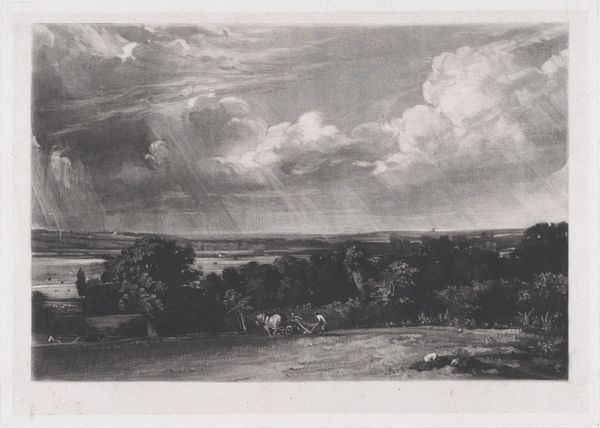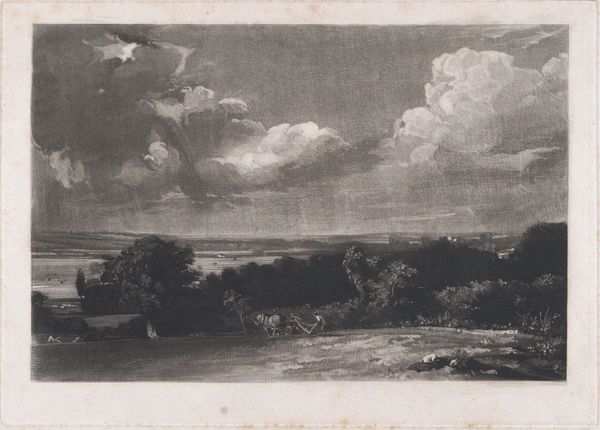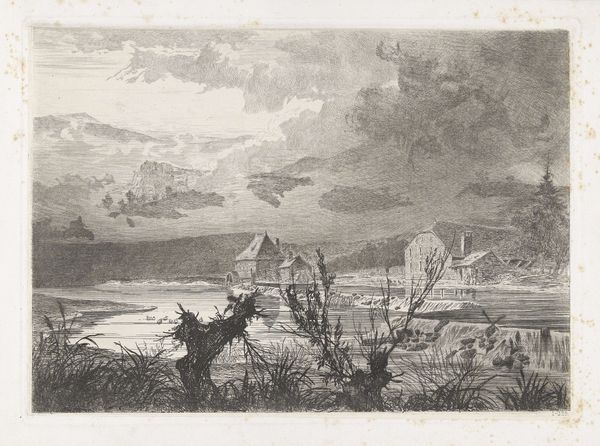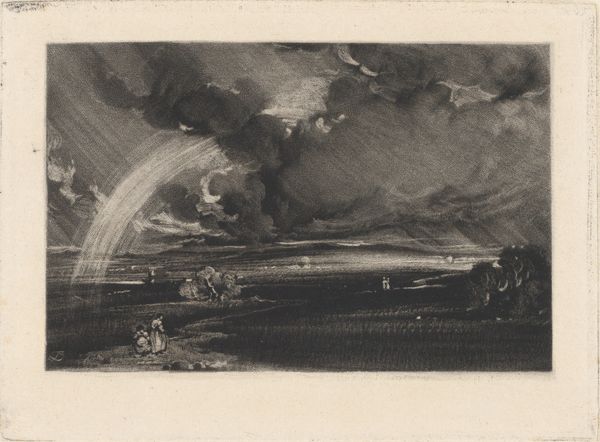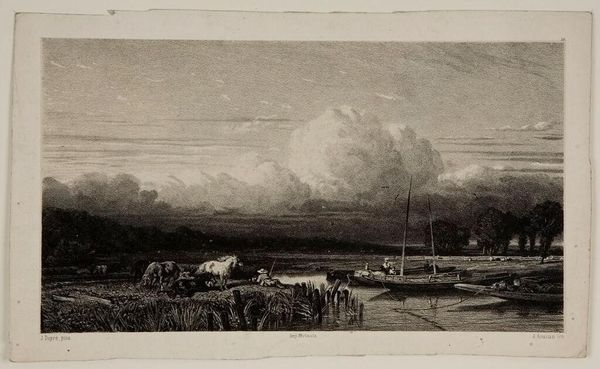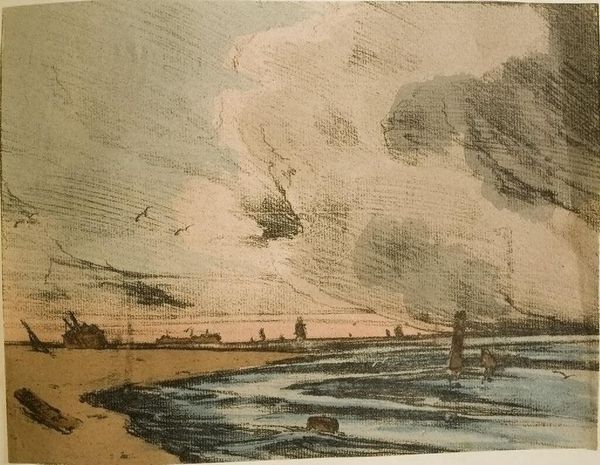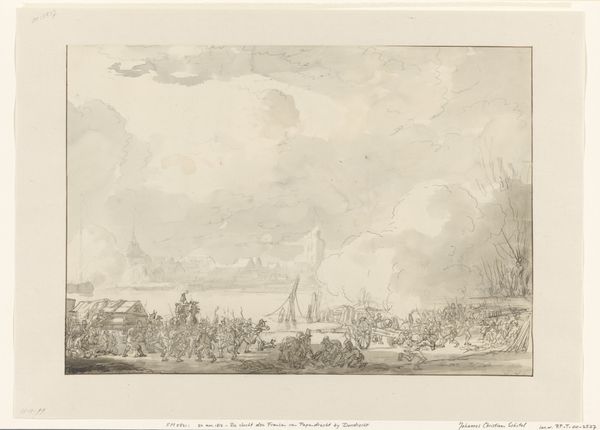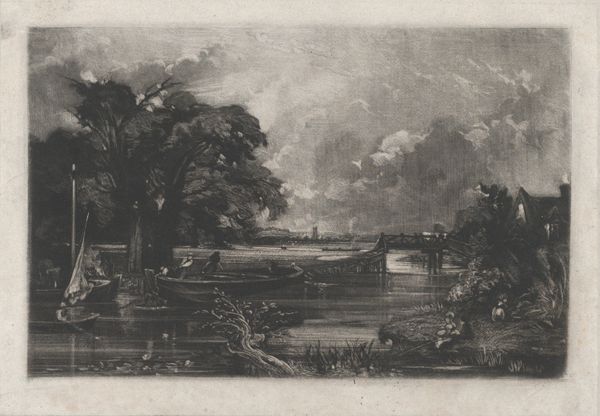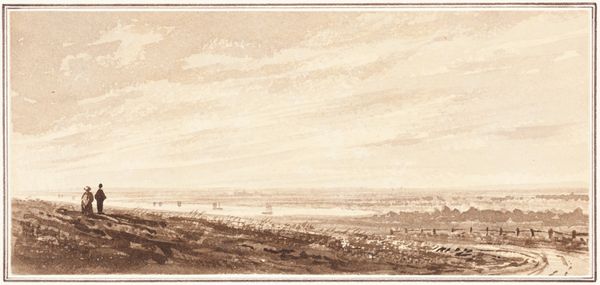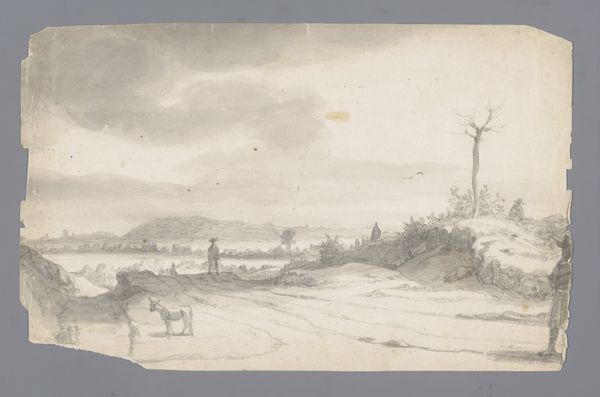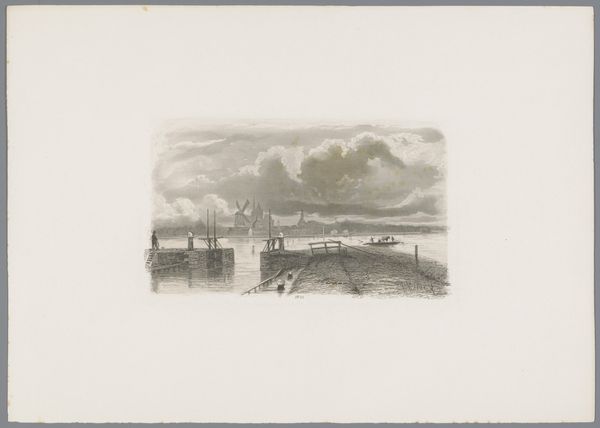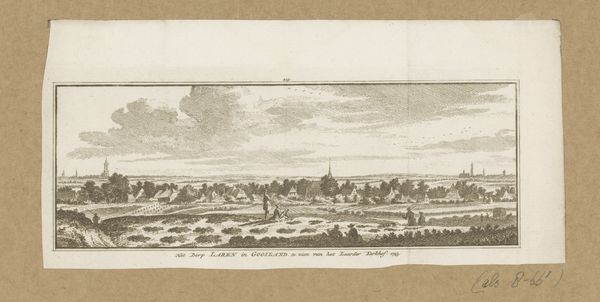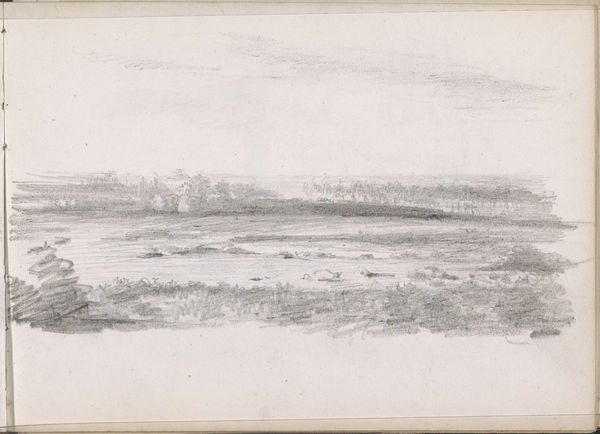
drawing, print, etching, charcoal
#
drawing
# print
#
etching
#
landscape
#
charcoal drawing
#
romanticism
#
charcoal
#
charcoal
Dimensions: Image: 5 in. × 9 11/16 in. (12.7 × 24.6 cm) Plate: 6 1/8 × 10 1/8 in. (15.6 × 25.7 cm) Sheet: 10 1/2 × 15 7/8 in. (26.7 × 40.3 cm)
Copyright: Public Domain
Editor: Here we have David Lucas’s “Spring,” made in 1829. It's a print, an etching to be exact, and uses charcoal too. The first thing that struck me is the drama of the sky compared to the small figures working the land. What do you make of that contrast? Curator: That contrast is central to understanding its Romantic spirit, actually. Think about the period: early 19th century. The Industrial Revolution is changing everything. This image presents both the power of nature, evident in the expansive sky, and the human labor reshaping the landscape, reflecting a complex relationship with industrialisation, where traditional rural life is placed next to technological change. Do you see how the windmill punctuates the horizon? Editor: Yes, the windmill does stand out. It’s not just nature then, but… technology kind of looming. Was there a specific audience for prints like this? Curator: Absolutely. Prints like this were often reproduced and circulated widely. So they are both artworks and, also, a form of communication and commentary. What does that suggest about its cultural significance? Editor: So, maybe it's about making this way of life... visible to more people, and shaping how they think about it? Was it celebrating or mourning the changes? Curator: A crucial question! And the answer is likely both. The Romantic movement had strong currents of nostalgia but it also embraced change on its own terms. It highlights the aesthetic qualities in a time of upheaval. Lucas offers not necessarily answers, but feelings about an unfolding world, that are both positive and concerning, and that's how it was embraced by the 19th century. Editor: That gives me a whole new perspective. I was just seeing pretty scenery. Thanks! Curator: My pleasure. It’s exciting when the historical context illuminates an artwork so vividly.
Comments
No comments
Be the first to comment and join the conversation on the ultimate creative platform.
